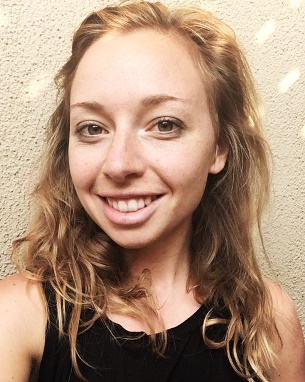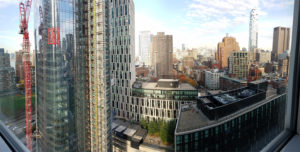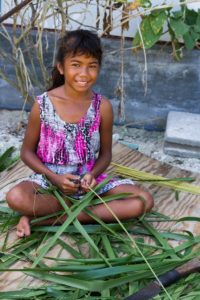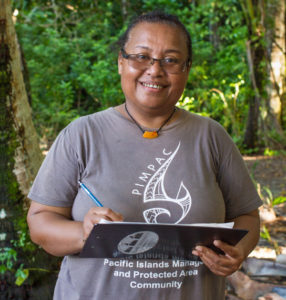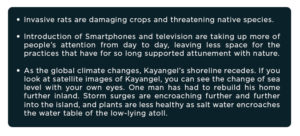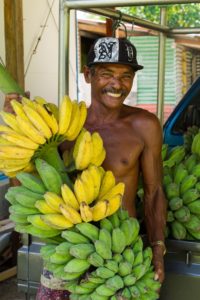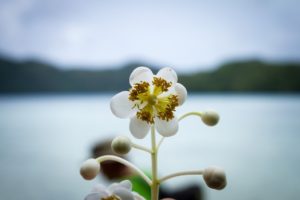Chances are you haven’t heard of Kayangel.
It’s brand-new on my radar too, thanks to a new ecological restoration project undertaken by Island Conservation, the non-profit organization I work for.
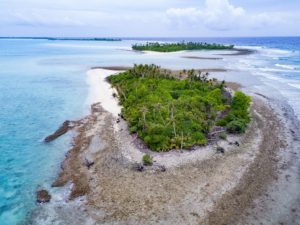
Kayangel Atoll, Palau, one of several sites in the region expected to see local biodiversity restored via invasive species removal.
Credit: Tommy Hall/Island Conservation
That you and I are only newly aware of Kayangel might be a reason to be hopeful, and I’ll explain why. But first let me offer some geographical and historical context.
Kayangel is a remote Palauan atoll island in Micronesia—east of the Philippines and south of the Mariana Trench, which is a chasm at the bottom of the sea, and the deepest place on Earth.
Kayangel is home to about 60 people who have thrived as a self-sufficient community for thousands of years. They don’t depend on the world beyond their shores to survive.
They make their own living on the island and waters they share with a variety of native plants and wildlife, many of which you have also likely never heard of, such as the mound-building Micronesian Megapode.
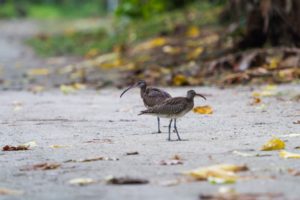
Bristle-thighed Curlews (Numenius tahitiensis) on Kayangel Atoll. Credit: Tommy Hall/Island Conservation
To the people of Kayangel, a healthy ecosystem and the diverse wildlife that define it are integral to daily life. Kayangel is a rare place in that it supports human life but is not heavily modified. As such, the small atoll island is rife with unique insights.
Coming to terms with the Anthropocene.
Around the world, new movements toward sustainable ways of living are taking shape as we wake up to environmental crises. But on Kayangel, living unsustainably has never been an option.
Dependent on their island’s resources, the people of Kayangel have learned to live in accord with the rhythms and resources of the island over thousands of years. If they were to overuse natural resources, the consequences would be immediate. For example, overharvesting could mean immediate food scarcity.
Not every place on Earth demonstrates so clearly the importance of sustainable living. In many cases the consequences of resource depletion take time to crop up as tangible problems. It can be all too easy and equally dangerous to overlook the environment’s warning signs, and this is the reality that is coming into focus globally more clearly every day now.
The rising rate of extinction, climate change, pollution, and numerous other environmental crises have shaken human delusions of grandeur.
“Anthropocene” is a term that refers to the era we live in now, in which the earth is predominantly shaped by human behavior. It does not really have a positive connotation. In fact, it’s a bit eerie.
Now that we are coming to recognize the state of the earth, we find ourselves scrambling to hold together this precarious situation we’ve gotten ourselves into. We primarily look to the problem-solving tools we’re familiar with–technology and policy–to rescue our species and our planet. But have these worked? Do they go deep enough?
When the usual approaches don’t seem to deliver results, it’s time have to admit that something different is needed. We are so good at research, analysis, designing tools, and negotiating the law, but these are not the only important skills and knowledge pathways when it comes to ecological intelligence.
Can Kayangel help us?
Approaching the crises of the Anthropocene with research, technology, and policy is essential, but in addition to functional, practical solutions, we need a shift in the quality and application of consciousness—a change in the way we perceive ourselves and our relationship with the natural world. Without this we’re liable to tragically replicate the mentality that brought us into peril in the first place, good intentions notwithstanding.
Widely-accepted, ordinary, common-sense daily practices are eating away at Earth’s biodiversity. Reasonable approaches to resolution aren’t working. What can we bring to our existing skills and understandings that empowers us to discern between the actions that support life and the actions that hasten extinction? It’s possible that a remote assemblage of Pacific islands holds a clue.
Stories, legends, and practices that support the balances between people and nature are woven into Kayangel’s (and all of Palau’s) culture.
Joyce Beouch, Conservation Planner for Palau’s Protected Areas Network with the Ministry of Natural Resources, Environment and Tourism (and formerly Palau Program Manager for Island Conservation) highlights some of Palau’s cultural beliefs and practices that have supported sustainable living for so long:
- My grandfather shared with me the creation story of Belau (Palau) through the legend of a giant clam who the creator placed on Lukes, a marine area near Angaur Island to the south. He talked of how life began in the sea and how we are connected to it, as we are all descendants of this giant clam. He talked of how the clam’s daughter fell, became Babedaob Island, and became our mother that cradles life.
- Later, I learned from women elders about how we must ask for permission from this mother to till the earth to plant food for her children. During my first experience on a reef flat during trochus (shellfish) gleaning, my father told me that if I move a stone to pick up a trochus I put it back as it was before. Per usual, I asked “Why?” and he responded, “Because it is someone’s home.”
- Much later, after I married, I observed a high chief in my husband’s village who inspects every boat that returned from fishing and I heard him say, “Is there no tomorrow?” I then saw heads dropping in shame as the fishers realized they had brought back too much.
When I was working together with Joyce on a piece of writing detailing these values and practices, she struggled to convey the meaning of a Palauan word with very deep meaning: turrekong. The English language does not have a word or phrase that can capture its significance.
She shared that it means “support, like a staff or walking stick that helps you reach your destiny–physically (health and environment), internally (mind and heart), and spiritually (sacred beliefs).” In other words, she says, “Palau (nature and culture) is the foundation and principle that will bring us toward a successful life.” It’s a powerful concept. Do we have anything like that in English?
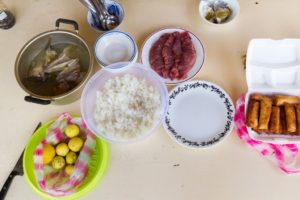
Meals on Kayangel come straight from the atoll’s and surrounding waters’ resources. Credit: Tommy Hall/Island Conservation
One can imagine that our familiar approaches to conservation, such as a fine for littering or illegal fishing, doesn’t quite have the same effect. These “corrections” engage with a person’s bank account and mood more so than with their belief system, heart, or personal identity. A fine doesn’t connect with something as psychologically embedded as a creation story, or fit together with a powerful belief system. It simply creates an inconvenience for the transgressor, and likely generates resentment toward environmental protection efforts.
We can’t just adopt Kayangel’s legends, stories, and practices to solve our problems, because they do not fit our context. They do not match the history of how we relate to nature. They do not mesh with what we genuinely think and believe about the natural world. We need to take time to reflect on what do we care about.
What resonates with us through heart, body, and mind? What inspires us to take care of the earth? What helps us realize we are not separate from nature? What would make someone hang their head in shame? What comforts and securities do we need to let go of to open to what we and the earth really need? Even to begin to inquire is to open the doors to change.
Different cultures, different pieces of the puzzle.
Unfortunately, Kayangel’s sustainable patterns too are at risk. The people of Kayangel are struggling to maintain balance with nature as features of the Anthropocene alter life everywhere on Earth. Some of the challenges Kayangel’s people face today include:
Kayangel is not immune to the influences of the Anthropocene. Joyce explains: “According to local conservation action planning reports, other community events like village beautification, river restoration and customary taro harvest and fishing occasions are becoming rare. It is through such events that we, Palauans develop a sense of belonging, responsibility and respect for the nature that provides for us. Our fast-changing lifestyle is gradually changing our conservation perception from a way of life to a course we study in school.”
Kayangel, like every other community on Earth, has to figure out ways to adjust and keep a functional equilibrium as the Anthropocene unfolds. Kayangel’s nature-culture relationship just happens to be less disturbed than most other places on Earth. While our eco-cultural weave is well-unraveled and in snarls, Kayangel’s is only a bit frayed at the edges.
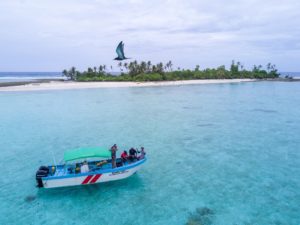
Island Conservation staff and Kayangel locals work together to remove invasive species. Credit: Tommy Hall/Island Conservation
We have some tools and techniques to bring to the problems of the Anthropocene that can help Kayangel, such as invasive species removal.
Invasive species represent a very interesting and tragic feature of the Anthropocene. Over millions of years evolution gives rise to ecosystems in which a diversity of species support one another’s existence. They evolve in concert, and this allows for some degree of ecological stability.
Human infrastructure and travel, however, result in species spanning the globe, landing in environments they never would have normally been able to access. Sometimes, their impact to the ecosystem is negligible or even beneficial (in these cases the introduced species is termed “non-native”). Unfortunately, the impact to the ecosystem can be devastating, even resulting in extinction of native species; while the invasive species thrives, the native species suffer.
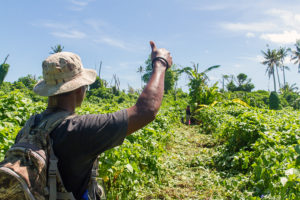
Island Conservation staff and locals working together to cut transects on Kayangel, Palau in order to access important parts of the island. Credit: Jason Zito/Island Conservation
When the introduced species is damaging to its new environment, it is considered “invasive.” Islands are particularly vulnerable to invasive species, as their native species have often evolved in the absence of predators and lack defenses. The arrival of a rat population can mean rapid collapse of evolutionarily unique and rare native wildlife. Invasive species are a known primary driver of extinction on islands. But hope is not lost.
In an effort to prevent extinctions of island species and the species that depend on islands, such as migratory seabirds, Island Conservation has initiated projects around the world to remove invasive species from sensitive island ecosystems inhabited by threatened species. The international team and its partners has recently set foot on Palau, including on Kayangel, to work together with the local community to remove damaging invasive species.
Not only do invasive species threaten Palau’s wildlife, but they also compromise food security. Invasive rats eat their way through a hefty percentage of the community’s crops.
Efforts to remove the invasive species offer hope for the recovery of threatened native species—which are important to Kayangel’s ecological health and are culturally important—and the return of agricultural prosperity.
So we bring to Kayangel invasive species removal, a very powerful and effective approach to preventing extinction.
And Kayangel offers the wisdom of a psychologically potent, deeply embedded culture-nature congruity that seems to be absent from much of the world’s cultural practices and local and global-decision-making.
Just consider the power of the following sentiment Joyce shared in her article: “As one high chief stated, ‘Palau does not need us, Joyce! We need her.’” This expression is not like an environmental law. This is not a line in a citation for illegal fishing. This is a statement with resonance–you can tell it is felt when it is heard, read, or spoken. And therefore, it is remembered.
We can look to Kayangel’s principles and practices to begin to clarify what’s missing in the Anthropocene and what the possible next steps are. The people of the remote atoll island can undoubtedly serve as inspiration and provide insight into a more ecologically intelligent way of life—one we can feel—if we are open to it.
Redefining the Anthropocene: Hard times call for radical measures.
Life on a remote Pacific island may strike you as something radically different from everything you’re familiar with, but it is becoming evident that what is familiar will not help us as we confront the environmental crises of the Anthropocene. If we are to be sensitive to the patterns of nature, and if we are to learn to play into them rather than be at odds with them, we need something other than the tools and techniques that got us here. We need something we wouldn’t ordinarily think of.
So, if before coming across this article you’d never heard of Kayangel, or Palau, or turrekong, maybe that’s a reason to be hopeful: there are ways of engaging with the natural world that are long-standing, but novel and unfamiliar to us, that can bring fresh perspective and much-needed context to our own relationships with nature.
We have not yet successfully addressed the crises of the Anthropocene—and until further notice, the name for this era continues to carry a somewhat grim tone. Maybe we need to drop everything we think we know, let go of our sensibilities for a moment, and envision a wildly different yet resonant relationship with ourselves and the earth.
Can you imagine a world in which “Anthropocene” is a beautiful word?
About the Author
Sara Kaiser received her Bachelor of Arts in Anthropology from the University of California, Santa Cruz. In addition to being a freelance writer and editor, Sara supports Island Conservation, an international non-profit, as a Communications Specialist where she produces and manages multi-media content featuring stories from the field, scientific research, press releases, and news related to conservation of islands, invasive species, global biodiversity, and extinction.
She brings her background in anthropology and writing together with her love for nature and her experience working in conservation to clearly and creatively communicate the diverse stories unfolding in the conservation sphere. She embraces the philosophical dimensions of conservation and seeks to better understand how patterns of thinking play into our relationships with ourselves and the natural world. Follow Sara on Twitter at @SaraKaiser12

